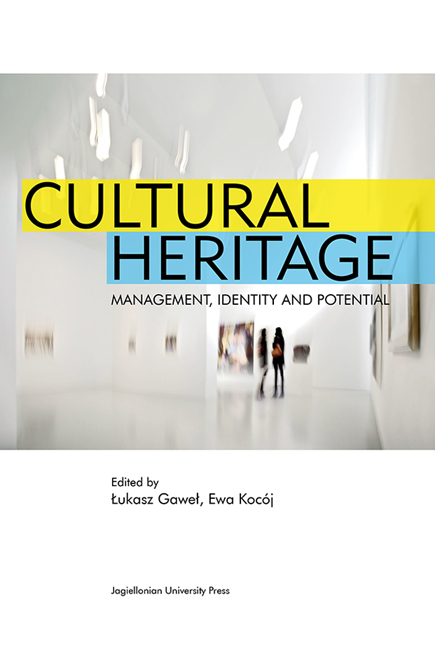Book contents
- Frontmatter
- Contents
- In Lieu of an Introduction
- Towards New Areas of Heritage and Cultural Heritage Management (Introduction)
- Pandora's Box or The Holy Grail? On Managing Cultural Heritage
- Cultural Heritage Within Postmodern Reality
- Legal Protection of Intangible Cultural Heritage. The Concept of the Safeguarding of Expressions of Folklore
- Cultural Heritage as a Shared Resource. The Role of Collaboration Between Stakeholders in Cultural Heritage Management
- Urban Exploring – City – Heritage – Identity
- The Thematisation of Public Space – a Problem or a Necessity?
- Memory for the Future. Managing History Within the Framework of Museums
- Historical Museums: Between Collective Memory and Politics of Historical Memory
- Between Ownness and Alienness: Towards the Dialectic of Cultural Heritage
The Thematisation of Public Space – a Problem or a Necessity?
Published online by Cambridge University Press: 10 January 2018
- Frontmatter
- Contents
- In Lieu of an Introduction
- Towards New Areas of Heritage and Cultural Heritage Management (Introduction)
- Pandora's Box or The Holy Grail? On Managing Cultural Heritage
- Cultural Heritage Within Postmodern Reality
- Legal Protection of Intangible Cultural Heritage. The Concept of the Safeguarding of Expressions of Folklore
- Cultural Heritage as a Shared Resource. The Role of Collaboration Between Stakeholders in Cultural Heritage Management
- Urban Exploring – City – Heritage – Identity
- The Thematisation of Public Space – a Problem or a Necessity?
- Memory for the Future. Managing History Within the Framework of Museums
- Historical Museums: Between Collective Memory and Politics of Historical Memory
- Between Ownness and Alienness: Towards the Dialectic of Cultural Heritage
Summary
Abstract: This work seeks to examine the thematisation process of revitalized spaces. This phenomenon is increasingly visible in Poland, a country where urban renewal and post-industrial spaces were not considered on a large scale until the beginning of the twenty-first century. The issue presented is based on the following examples – Gdańsk Shipyard, Kazimierz and Nowa Huta in Krakow, and Nikiszowiec estate in Katowice.
Key words: disneylandization, gentrifi cation, public space, revitalization, thematisation
The development of cheaper and faster means of transport, improvement of information fl ow processes and extended access to free time during the last 100 years, have been the reason for the rapid growth of mass tourism. However, the number of places, available to tourists is limited – due to financial and time reasons. Nowadays, tourist centers compete with one another to attract tourists, which is not an easy task. The tourists of today have very high expectations – they do not only want to visit landmarks, but also get to know the local cuisine, culture and traditions of the visited countries. When leaving a country they want to have the feeling that they have really explored that part of the world, even if they have spent there only a short period of time. To present public places under a certain theme (in this article called “thematisation”) or to transform them into an amusement park, (a phenomenon known as disneylandisation), are strategies which may help to make a site more attractive and more mentally accessible to visitors.
Piotr Lorens defi nes disneylandisation as a process based on replacing real space by its unreal and safe equivalent where the new place lacks any characteristics of the original and is created of new parts emerging from nowhere. In another article Lorens writes that thematisation is a conscious and intentional action, transforming a given space into architectural forms referring to old times or other civilizations, which is related to the creation of an urban spectacle for mass audiences. Although Lorens equates disneylandisation with the thematisation of public places, in this article the two terms are not used synonymously. The main reason for this decision is that the following examples are mostly connected with cultural heritage, exploiting the history of the space and its authenticity rather than creating unreal spaces – so the term thematisation seems to be more suitable.
- Type
- Chapter
- Information
- Cultural Heritage - Management, Identity and Potential , pp. 83 - 96Publisher: Jagiellonian University PressPrint publication year: 2015



